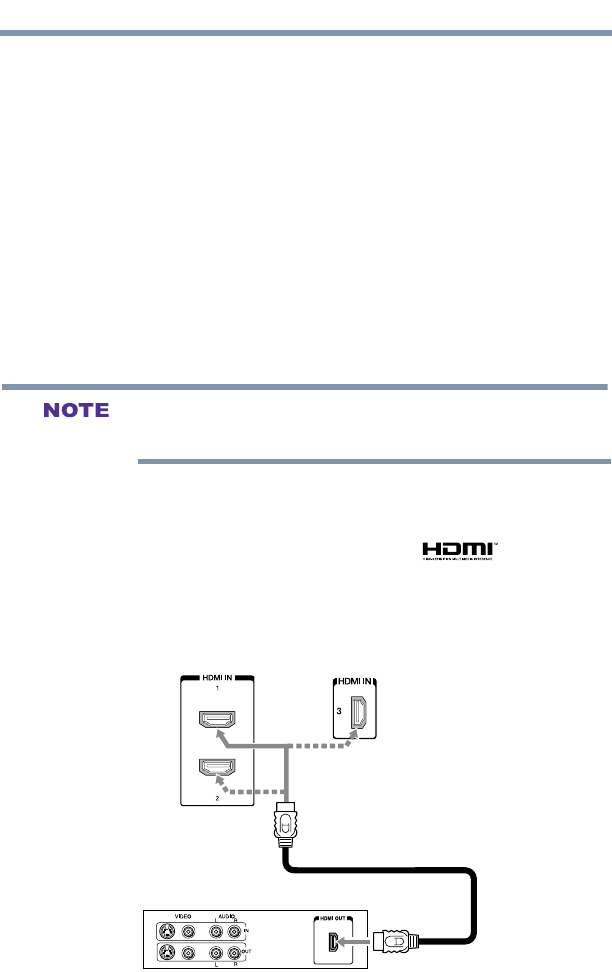
30
Connecting Your TV
Connecting an HDMITM or DVI device to the HDMITM input
Connecting an HDMI
TM
or DVI device to the HDMI
TM
input
The HDMI
TM
input on your TV receives digital audio and
uncompressed digital video from an HDMI
TM
source device, or
uncompressed digital video from a DVI (Digital Visual Interface)
source device.
This input is designed to accept HDCP (High- Bandwidth Digital-
Content Protection) program material in digital form from EIA/
CEA-861-D– compliant
[1]
consumer electronic devices (such as a
set-top box or DVD player with HDMI
TM
or DVI output).
The HDMI™ input can accept and display various signal formats.
For detailed signal specications, see “HDMITM signal formats”
on page 119.Supported Audio format: Linear PCM, sampling rate
32/44.1/48 kHz.
To connect a computer to the HDMI
TM
input, see “Connection to the
TV’s HDMITM terminal” on page 39
To connect an HDMI
TM
device, you will need one HDMI
TM
cable
(type A connector) per HDMI
TM
device.
v For proper operation, it is recommended that you use an
HDMI
TM
cable with the HDMI
TM
Logo( ).
v HDMI
TM
cables transfer both video and audio. Separate analog
audio cables are not required (see illustration).
See “Setting the HDMITM audio mode” on page 56
TV back panel
HDMI device
TM
(Sample Illustration) L1350U/L2300U Series (except 58L1350U)
—HDMI
TM
connections
Connecting an HDMI
TM
or DVI device to the HDMI
TM
input
HDMI
TM
HDMI
TM
HDMI
TM


















